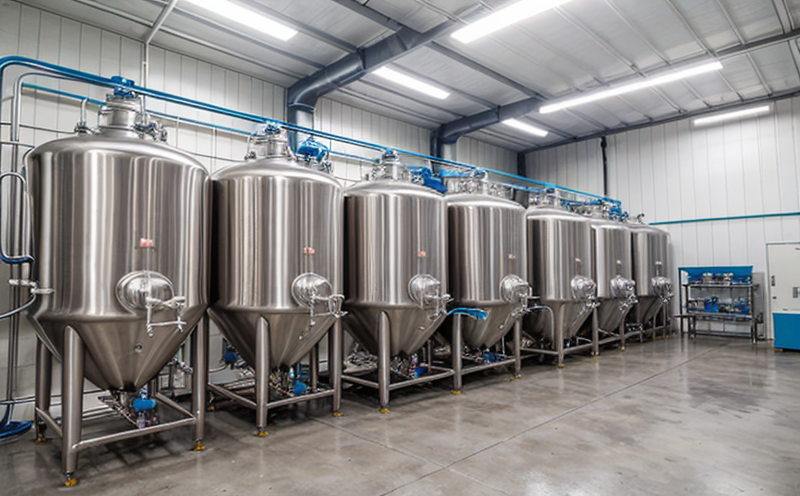FDA BAM Yeast and Mold Detection in Fermentation Products
The FDA Bacteriological Analytical Manual (BAM) Yeast and Mold Detection test is a critical method used to ensure the safety of fermented products. This method plays an essential role in safeguarding consumers from potential health risks associated with microbial contamination, particularly yeast and mold spores.
Fermentation products are often rich environments for microorganisms, which can thrive under optimal conditions. The FDA BAM test is designed to detect and quantify these organisms accurately, providing quality assurance that the product meets regulatory standards set by the U.S. Food and Drug Administration.
The procedure involves several steps, including sample preparation, inoculation of the sample into a specific growth medium, incubation, and final enumeration using appropriate counting techniques such as colony-forming unit (CFU) counts. This method ensures consistent results across different batches and facilities by adhering to strict guidelines outlined in FDA BAM.
The importance of this test cannot be overstated, especially for industries like brewing, winemaking, dairy processing, and food manufacturing where fermentation is a key process step. By implementing this testing protocol, manufacturers can ensure compliance with regulatory requirements while also protecting their brand reputation through transparent quality control measures.
Our laboratory adheres strictly to the FDA BAM guidelines when conducting yeast and mold detection services for fermentation products. We use state-of-the-art equipment and highly trained personnel to deliver reliable results that meet both internal standards and external audits conducted by health authorities.
In addition to ensuring compliance with regulatory bodies, our clients benefit from detailed reports outlining test procedures followed, observed growth patterns during incubation periods, and final CFU counts. These comprehensive documents serve not only as proof of adherence but also valuable tools for process optimization within production facilities.
Applied Standards
The FDA Bacteriological Analytical Manual (BAM) Yeast and Mold Detection test is based on internationally recognized standards such as those provided by the U.S. Food and Drug Administration, which ensures its reliability and applicability across various sectors.
Specifically, this method follows the guidelines laid out in FDA BAM Chapter 7, which provides detailed instructions on how to conduct accurate yeast and mold detection. By adhering strictly to these protocols, we guarantee consistent results that can be trusted by all stakeholders involved in the production process.
Our commitment to quality extends beyond mere compliance; it includes continuous improvement based on feedback from our clients as well as updates issued by regulatory agencies like the FDA. This approach ensures that our services remain relevant and effective even as industry practices evolve over time.
Scope and Methodology
| Step | Action | Description |
|---|---|---|
| 1 | Sample Collection | Collect representative samples from the fermentation batch. |
| 2 | Preparation | Precisely prepare the sample according to FDA BAM guidelines. |
| 3 | Inoculation | Inoculate prepared samples into appropriate growth media. |
| 4 | Incubation | Incubate the inoculated cultures under controlled conditions. |
| 5 | Enumeration | Count colonies using CFU methods for accurate quantification. |
| 6 | Data Analysis | Analyze data to determine compliance with specified limits. |
The FDA BAM Yeast and Mold Detection test encompasses a series of meticulous steps aimed at ensuring accurate detection and quantification of yeast and mold in fermentation products. Each step adheres strictly to the guidelines provided by the U.S. Food and Drug Administration, thereby guaranteeing reliable results.
Our laboratory uses advanced analytical techniques such as spectrophotometry for precise determination of growth parameters during incubation phases, ensuring accurate enumeration even at low levels of contamination. Additionally, we employ highly trained microbiologists who possess extensive experience in executing FDA BAM procedures flawlessly.
Why Choose This Test
Selecting the FDA BAM Yeast and Mold Detection test offers numerous advantages for your organization, particularly if you operate within industries reliant on fermentation processes. Here are some compelling reasons why choosing this method could be beneficial:
- Compliance with Regulatory Requirements: Ensures strict adherence to U.S. Food and Drug Administration guidelines.
- Rigorous Quality Assurance: Provides robust evidence of product safety through rigorous testing protocols.
- Consistent Results: Achieves reliable outcomes across multiple batches and locations, enhancing confidence in production processes.
- Expertise from Trained Professionals: Leverages the skills and knowledge of highly skilled microbiologists specializing in FDA BAM procedures.
- Advanced Analytical Techniques: Utilizes cutting-edge instrumentation for accurate quantification even at low contamination levels.
- Comprehensive Reporting: Delivers detailed reports that not only document test results but also offer insights into potential areas of improvement within the production line.
- Continuous Improvement: Benefits from ongoing updates and feedback, ensuring our methods remain relevant and effective in an ever-changing regulatory landscape.
In conclusion, selecting FDA BAM Yeast and Mold Detection demonstrates your commitment to maintaining high standards of quality and safety in your fermented products. It provides peace of mind knowing that every batch undergoes stringent evaluation, thus protecting both consumers' health and your brand's integrity.





